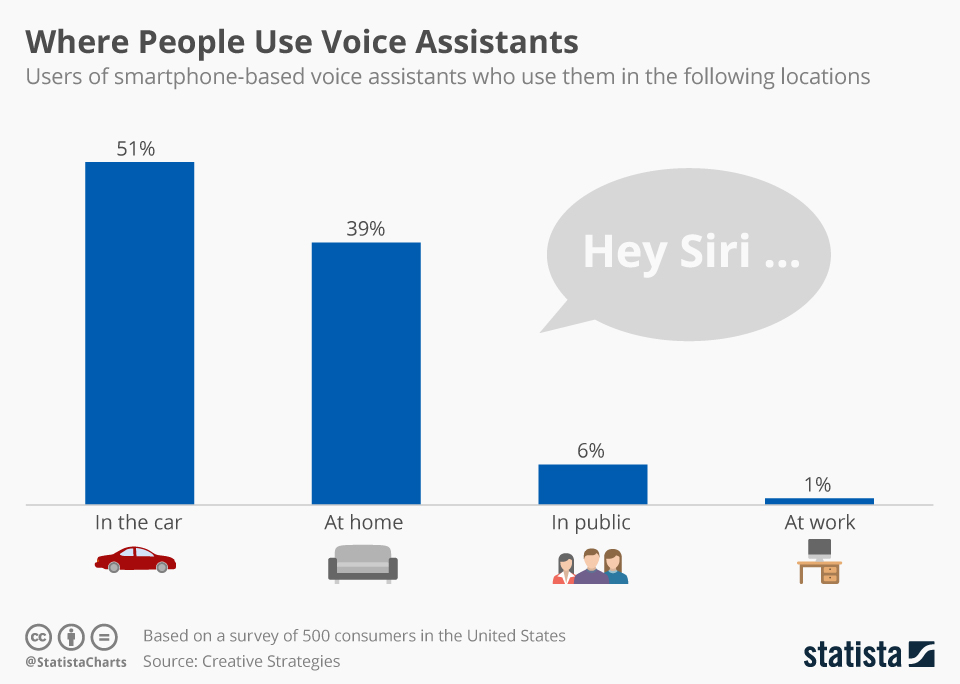Where People Use Voice Assistants
The next big thing in tech?
It is the nature of the tech industry to always be looking for the next big thing. Rarely have industry insiders and observers been as united in their view of what that thing is as they currently are. If the predictions turn out to be correct, touch control will soon be seen as “so 2010” as digital voice assistants take control of our lives.
With Alexa, Siri, Cortana, Google Now and S Voice, many major tech companies have thrown their hat in the ring and shown what they believe is the user interface of the future. However, there are signs that suggest that consumers aren’t equally excited about talking to their gadgets. According to a recent survey by Creative Strategies, people mainly use smartphone-based voice assistants in the privacy of their own home or car. Just 6 percent of those using the technology stated to be doing so in public and hardly anybody admitted to using Siri & Co. at work.
Reviews for Apple’s AirPods suggest the same: one of the main points of criticism is the lack of physical buttons to control music playback and adjust volume. To do so, users are required to either take out their phone or talk to it, which, as it turns out, many people aren’t comfortable with – at least in public.
With Alexa, Siri, Cortana, Google Now and S Voice, many major tech companies have thrown their hat in the ring and shown what they believe is the user interface of the future. However, there are signs that suggest that consumers aren’t equally excited about talking to their gadgets. According to a recent survey by Creative Strategies, people mainly use smartphone-based voice assistants in the privacy of their own home or car. Just 6 percent of those using the technology stated to be doing so in public and hardly anybody admitted to using Siri & Co. at work.
Reviews for Apple’s AirPods suggest the same: one of the main points of criticism is the lack of physical buttons to control music playback and adjust volume. To do so, users are required to either take out their phone or talk to it, which, as it turns out, many people aren’t comfortable with – at least in public.





















